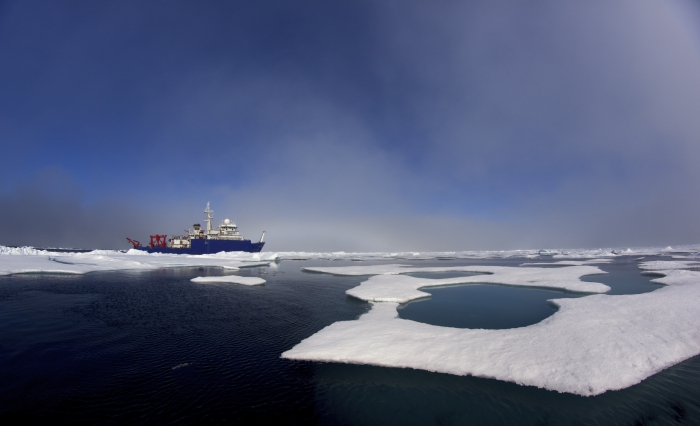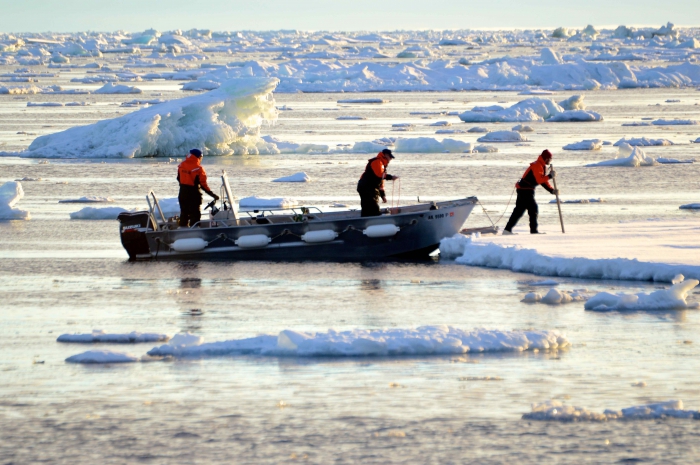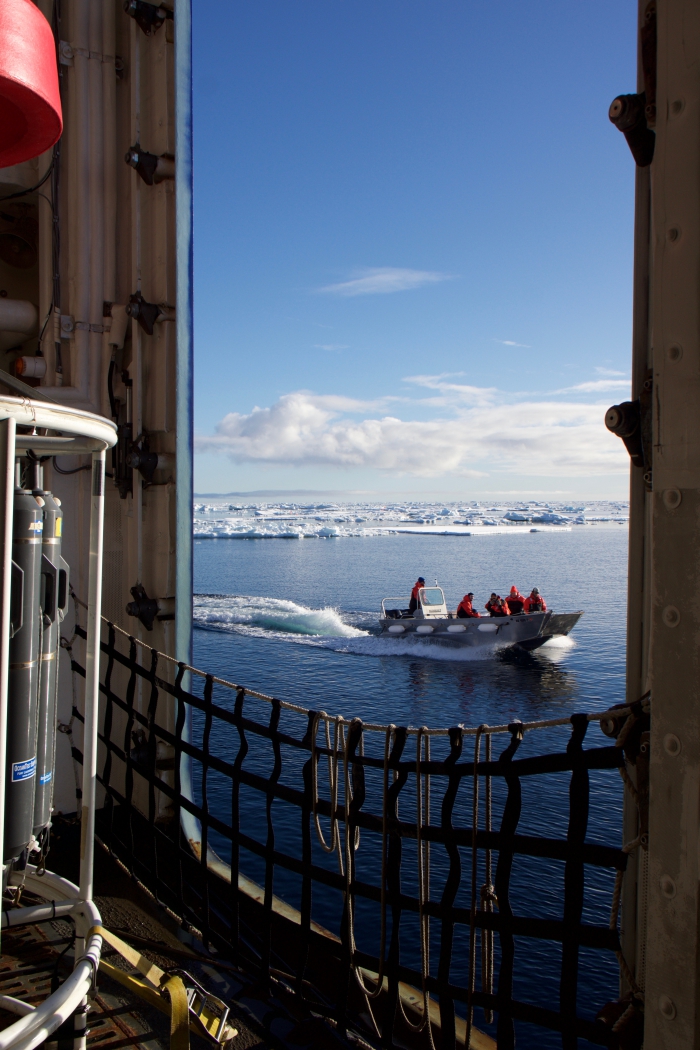By: Lauren Frisch, Public Information Officer, Sikuliaq Science Liaison, College of Fisheries and Ocean Sciences, University of Alaska Fairbanks
The research vessel (R/V) Sikuliaq is owned by the National Science Foundation and operated by the University of Alaska Fairbanks College of Fisheries and Ocean Sciences as part of the U.S. academic research fleet. The global-class research vessel is used by scientists in the U.S. and international oceanographic community through the University-National Oceanographic Laboratory System (UNOLS). Ice trials conducted during the spring of 2015 for the R/V Sikuliaq helped researchers and crew understand the opportunities and limitations posed by operating an ice-capable vessel in icy Arctic waters.

Sikuliaq means "young sea ice" in Inupiaq, a name that properly reflects the designed function of the research vessel. The 261-foot R/V Sikuliaq was built to occupy a specific niche for Arctic researchers who are interested in conducting research in moderate ice conditions. The ice-capable research vessel was not designed with technology to cut ice in the most extreme situations. The ship is a smaller and more economical option than more serious icebreakers like the USCGC Healy. But given its capacity to work and maneuver in ice that might be newer or thinner, the vessel is more versatile for icy Arctic research than a non-icebreaker.
During March and April of 2015, researchers and crew set out to investigate the limitations of the Sikuliaq to understand the full ice-capability of the vessel. This includes the ability to maneuver and conduct day-to-day activities, as well as the feasibility of completing various scientific tasks in ice. The ice trials were conducted south of St. Matthew's Island in the Bering Sea; they occurred between 19 March and 7 April, which is typically when ice cover is the greatest in the Arctic.

Researchers onboard tested the ability of the Sikuliaq to operate different scientific equipment in the ice, such as the conductivity temperature and depth (CTD) instrument, which is commonly used to collect a breadth of oceanography samples. Researchers also practiced tasks such as remaining in place in the ice to collect data at a particular station, towing plankton nets through ice, and sampling sea ice properties.

The Sikuliaq crew used the ice trials as an opportunity to test operational procedures related to regular day-to-day ship operations, including the ability to turn within sea ice and ram through new ice while sailing on a path. The experience also served as an opportunity to train ship personnel. Ensuring the researchers and crew were safe during all operations was critical during the process.
The first few days of the ice trials were halted due to water intake issues. When a faulty valve was diagnosed, the crew and researchers were able to continue on with their original mission. Variable ice conditions throughout the trials made it tricky to find ice that was suitable for testing. For example, much of the ice in the study path was not attached to land, or was not level enough for researchers to utilize. But the variability in thickness helped reveal the limitations of the Sikuliaq to cut through ice: in one case, ice was extremely compacted and not possible to cut through.
The ice trials confirmed that the Sikuliaq could operate during heavy ice months in March and April, and cut through ice up to three feet. But the research vessel had difficulty traveling through thicker ice, as well as ice that was highly compacted. The trials also confirmed that the ship can transit through thin ice floes when need be.
Video of the Sikuliaq breaking ice is available here.
Further information about the Sikuliaq is available on the University of Alaska Fairbanks College of Fisheries and Ocean Sciences website.
